![]()
![]()
![]()
Use LEFT and RIGHT arrow keys to navigate between flashcards;
Use UP and DOWN arrow keys to flip the card;
H to show hint;
A reads text to speech;
19 Cards in this Set
- Front
- Back
- 3rd side (hint)
|
Fluid balance |
Normal fluid outputs: - 0.5-1ml/kg/hr of urine - 850ml insensible losses - 100ml faeces
Oliguria is <400ml/day
Avoid fluid overload in preeclampsia. Limit fluid intake to 80ml/hr in preeclampsia |
|
|
|
Alkaline phosphate |
ALP may be 3 x higher than normal by end of third trimester |
|
|
|
Albumin levels |
Fall by 20-40% in pregnancy Normal pregnancy range 23-42g/L |
|
|
|
Statistical terminology |
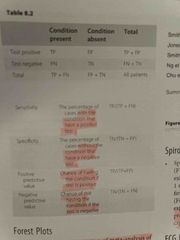
Back (Definition) |
|
|
|
Lung function |
FVC, tidal volume and peak expiratory flow increase during pregnancy
FRC functional residual capacity decreases during pregnancy |
|
|
|
ECG changes in pregnancy |
Increased HR Q waves in leads III and aVF T wave inversion in lead III Cardiac axis may be deviated by up to 15 degrees secondary to elevation of the diaphragm Reduction in PR interval |
|
|
|
ABG |
A degree of hyperventilation is normal in pregnancy PaCO2 will tend to be low/normal. |
|
|
|
Combined test |
11-14 weeks Nuchal translucency BHCG PAPPA
NBP
Tests for trisomies 21,13,18 |
|
|
|
Quadruple test |
15-20 weeks PIBA PAPPA Inhibin A BHCG AFP
Tests for trisomies 21,13,18 |
|
|
|
Cell free DNA aka non invasive prenatal testing (NIPT) |
After 10 weeks Highly sensitive for T21 and T18, less for T13 |
|
|
|
Gestational diabetes |
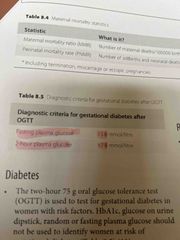
Back (Definition) |
|
|
|
Thyroid disease |
Hypothyroidism- most women will require an increase in thyroxine with the aim of maintaining a good control of TSH particularly in the first half of pregnancy. Target TSH <2.5. uU/ml in trimester 1. And <3 uU/ml in second and third trimesters.
Hyperthyroidism- If TSH is subnormal in pregnancy this can be because of the suppressive effect of BHCG as noted in hyperemesis cases. May also be due to autoimmune disease, goiter or TSH antibodies.
Thyroid peroxidase antibodies (anti-TPO) - Hashimotos thyroiditis (hypothyroid)
TSH receptor antibodies (TRAb) - Graves disease (hyperthyroid) |
|
|
|
Renal |
GFR increases by 50% Creatinine falls to 10 mM/L below pre pregnancy levels Physiological hydronephrosis (particularly of the right kidney) Uric acid falls in the first trimester then rises by term. Can increase in preeclampsia, twin pregnancies and in acute fatty liver of pregnancy. |
|
|
|
Liver disease |
OC - itching, raised transaminases and bile acids Gall bladder disease may occur in pregnancy = raised GGT, ALP and symptoms of biliary colic HELLP
Acute fatty liver of pregnancy - hypoglycaemia and deranged liver function. Rare. Test glucose in any unwell pregnant woman with deranged LFTs. |
|
|
|
Haematology |
Thromboscytopaenia may be physiological, idiopathic, drug induced or related to HELLP or microangiopathic disease. Physiological thrombocytopenia usually presents with levels >100x10^9 /L There is an increase in several clotting factors in pregnancy. |
|
|
|
FBS |
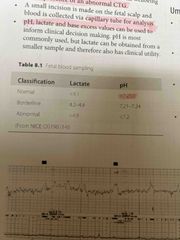
Back (Definition) |
|
|
|
Umbilical cord gases |
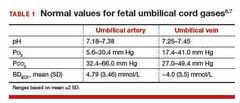
Back (Definition) |
A sharp difference in the pH in the two samples reflects a more acute event |
|
|
APGAR |
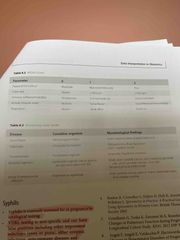
Back (Definition) |
|
|
|
PMR |
The PMR is defined as the number of stillbirths and neonatal deaths per 1,000 total births |
|

